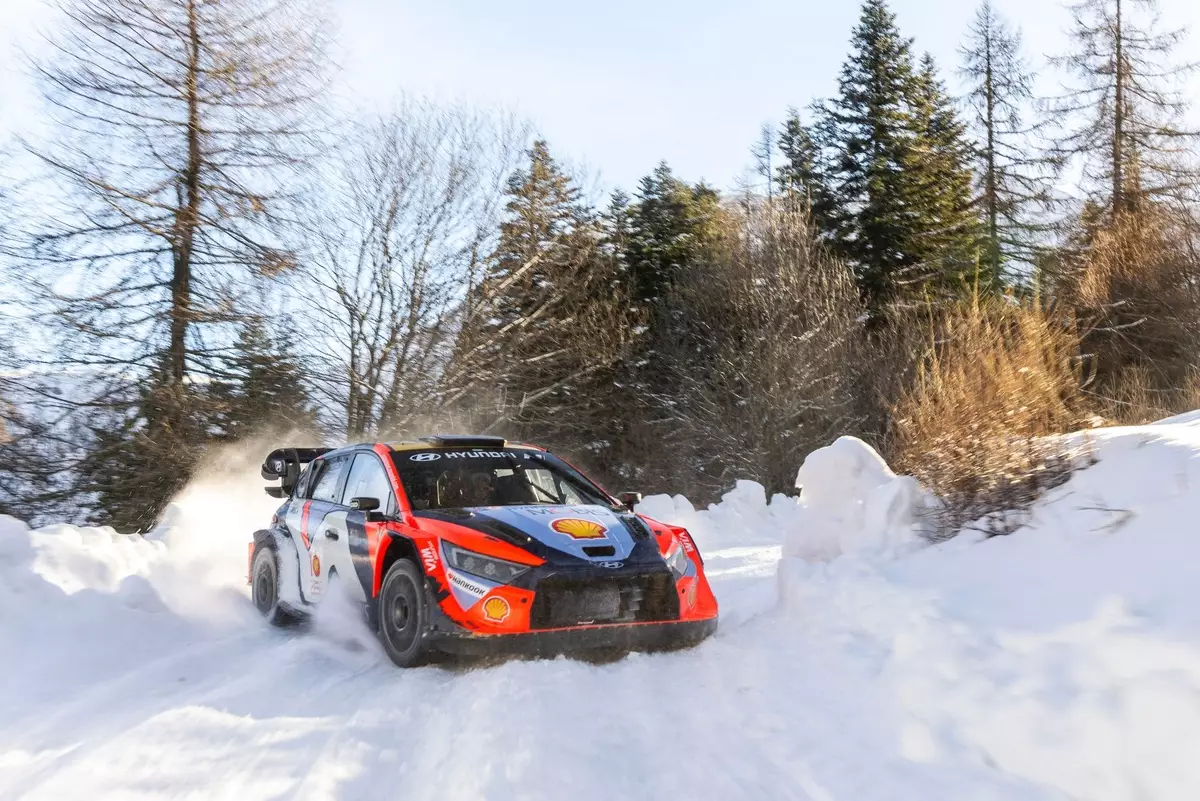The World Rally Championship (WRC) is set to witness significant changes as it embarks on a new era with the 2025 specifications, marking a departure from the hybrid powertrain systems that have characterized the past few seasons. As vehicles transition back to a more classic configuration, drivers and teams alike are reflecting on the impact of these modifications. Notably, Hyundai Motorsport’s Ott Tanak has articulated his perspective on this shift, shedding light on how the absence of hybrid technology is reshaping the driving experience and the overall dynamics of rally racing.
The decision by the FIA to eliminate hybrid power from Rally1 cars was met with mixed reactions, yet it is essential to grasp the philosophy behind this change. The intention was to simplify vehicle mechanics and enhance driver engagement. As Tanak has pointed out, the new specification is “much simpler” to handle compared to the complexities introduced by hybrid systems. This simplified design not only streamlines performance but also returns to the fundamental essence of rally driving, allowing pilots to immerse themselves in the raw experience of control, feedback, and road dynamics.
While the excitement surrounding the WRC may seem diminished with the reduction of horsepower—approximately 130 horsepower generated by the hybrid units—Tanak argues that the driving experience remains invigorating. The Rally1 cars, stripped of their hybrid systems, are now roughly 87 kilograms lighter, leading to increased agility and responsiveness on the stages. The reduction in weight is particularly exciting for drivers, as the car becomes “more playful” on various terrains. This lightweight nature allows for better handling, giving pilots the confidence to push the limits, especially on technical courses where precision is paramount.
However, the downside of losing power from a performance perspective cannot be ignored. The slight decrease in turbo restrictor size may inhibit acceleration, but as Tanak notes, this alteration does not undermine the pleasure of driving the redesigned cars. The key lies in how drivers adapt their techniques and strategies to maximize the capabilities of the new vehicles. This return to a simpler structure makes it imperative for teams and drivers to recalibrate their approach, deepening their connection with the car and the rally environment.
With the introduction of Hankook’s new control tyres, teams have encountered an additional realm of adaptation. Drivers like Tanak have engaged in extensive pre-season testing to familiarize themselves with the characteristics of this fresh rubber composition. While uncertainties loom regarding the performance attributes of these tyres, Tanak expresses an optimistic mindset, indicating a strengthened bond with his Hyundai i20 N as they commence the new season.
Feeling “much more comfortable” compared to the previous season, Tanak emphasizes the role of familiarity in the professional racing landscape. Having established rapport with both the vehicle and the team, he approaches Monte Carlo with renewed confidence. Not only does he reflect upon the lessons learned from the last year, but he also envisions leveraging this knowledge to enhance his performance in the demanding conditions that the WRC is known for.
With the onset of the 2025 season, WRC is poised to embrace a paradigm shift, returning to a “back to basics” mentality that many enthusiasts may find refreshing. As hybrid technology becomes a relic of the past in this context, the focus returns to pure, unfiltered rally driving that celebrates skill, strategy, and connection between man and machine. The insights offered by Tanak underscore a collective longing among drivers for a more intuitive and dynamic driving experience—one that is less encumbered by technicalities while still providing thrilling competition.
As the 2025 WRC season unfolds, the anticipation is palpable. With at least a fresh perspective on what a rally car represents, drivers and fans alike look forward to a series of races that prioritize the thrill of the sport and the unique challenges that lie ahead. In this critical time of transition, the championship may very well discover a revitalized passion that echoes the sport’s roots, resonating with both competitors and audiences around the world.


Leave a Reply